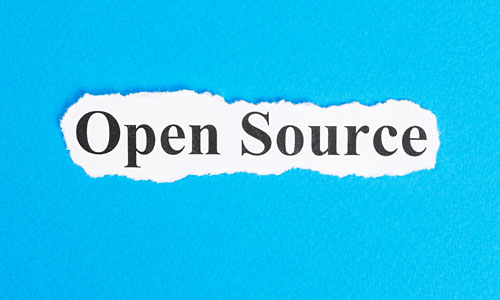Open-Source Intelligence October 2021
Want more free featured content?
Subscribe to Insights in Brief

The increasing accessibility of data promises to enable new opportunities for both enterprises and individuals and to create new complexities in big‑data markets, global statecraft, and intelligence. The transparency that open‑source intelligence (OSINT) brings about may transform knowledge work and drive the emergence of new data‑integrity and data-privacy risks. OSINT promises to empower researchers, data analysts, activists, and hobbyists with data that were previously difficult to access and to inspire new tools for managing and analyzing data. End users' ability to transform disparate forms of public data into actionable data will likely determine the impact that OSINT has on private industry and the world at large.
The public availability of data from networked sensors, satellites, cameras, and other sources is helping to enable open‑source data ecosystems that are accessible to a range of end users. For example, nongovernment organization Human Rights Watch (New York, New York) has analyzed environmental satellite imagery to document destruction of villages and ethnic cleansing in Myanmar. In a similar vein, investigative group Bellingcat (Stichting Bellingcat; Amsterdam, Netherlands) used satellite imagery, photographs, and basic mathematics to demonstrate Russia's role in the Malaysia Airlines Berhad (Khazanah Nasional Berhad; Kuala Lumpur, Malaysia) Flight 17 crash in Ukraine in 2014.
Large companies are also leveraging large open‑source data repositories to establish new revenue streams. Hedge funds regularly make use of sentiment on social media to monitor investment opportunities and track corporate flights to predict mergers and acquisitions. At a larger scale, data brokerages share and sell large volumes of sensitive data to enterprises and governments. Indeed, a recent report by Justin Sherman, a Cyber Policy Fellow at the Duke University (Durham, North Carolina) Sanford School of Public Policy's Technology Policy Lab, shows that ten major US‑based data brokers—including Acxiom (The Interpublic Group of Companies; New York, New York), LexisNexis (RELX; London, England), and Nielsen Holdings (New York, New York)—advertise sensitive demographic data and personal information about, for example, political alignment, banking, health care, and consumer behavior. In addition, the report notes that people-search websites enable anyone to search public records and uncover people's home addresses, phone numbers, and personal associations.
Open-source data platforms continue to emerge, enabling greater transparency in various industries and providing general users with powerful tools. For example, data platform Quiver Quantitative (Quiver Quantitative; Spring Green, Wisconsin) provides retail investors with free access to data that established hedge funds and banks have ready access to. Platform users can analyze investing sentiment on social media, political officials' trading activities, corporate flight records, and government contract activities. Although many existing data platforms are behind paywalls, new publicly available data platforms may emerge.
The unfettered expansion of open-source data sources and data‑analysis tools promises to empower individuals, but it will also introduce trade‑offs, creating new cybersecurity, misinformation, and national-security risks. Social-media, entertainment, and technology companies that have frictionless user‑data streams will likely lead in data markets unless strong data regulations emerge. However, the future is uncertain, and changing conditions could trigger alternative outcomes. Some examples of potential events that could transform the future of OSINT follow:
- Greater democratization of data and data-analysis tools. The proliferation of public data repositories and search engines may disrupt data monopolies and eliminate various barriers to data access. Access to quality open-source data and data-analysis tools may change the competitive landscape in big‑data markets, allowing small firms to leverage powerful data resources that were previously unavailable.
- Advances in data management and curation. Although access to various forms of data continues to expand, companies will need to validate data sources and use various data-management tools to turn large volumes of open-source data into actionable data. Advances in data-curation and data-management tools enable companies to uncover new useful data sets for various applications.
- Data-privacy and antitrust regulations. New data-privacy regulations and antitrust enforcement in various regions may lead to significant changes for data collection and general availability and drive changes in big‑data markets. Such developments may disrupt technology road maps for AI‑powered technologies and inhibit the commercialization of various data-driven services.
- Augmentation of misinformation and disinformation. Without proper tools to verify the accuracy of open-source data and sources, targeted disinformation campaigns and misinformation may expand rapidly. Some end users may leverage open-source data to back conspiracies, creating complex content-moderation challenges on social networks.
- The expansion of collaborative research. Advances in OSINT may spur collaborative activities between hobbyists and professionals in various sectors. Various opportunities exist in academic research, law enforcement, national security, finance, and business intelligence.
- Disruptions in the cybersecurity landscape. Open-source data repositories can provide attackers with reconnaissance tools that identify the vulnerabilities of connected devices, enabling attackers to fine‑tune social-engineering efforts and steal sensitive information from enterprises, governments, and individuals.
OSINT practices promise to expand in the coming years as new data sources emerge and data-analysis tools become increasingly powerful and easy to use. Although data-privacy regulations (for example, Europe's General Data Protection Regulation) may slow or limit the democratization of big data, new public data sources will likely emerge and enable new opportunities in various sectors. Significant advances in OSINT may lead to shifts in big‑data-market dominance, transferring market power to enterprises that control the best software and services for analyzing data and curating data sets for specific applications. In addition, open access to big‑data technologies might give unprecedented power to individuals, creating new challenges for enterprises and governments that abuse their power. Whether OSINT will secure more power and influence for entrenched enterprises and global leaders or democratize power for individuals around the world is highly uncertain.